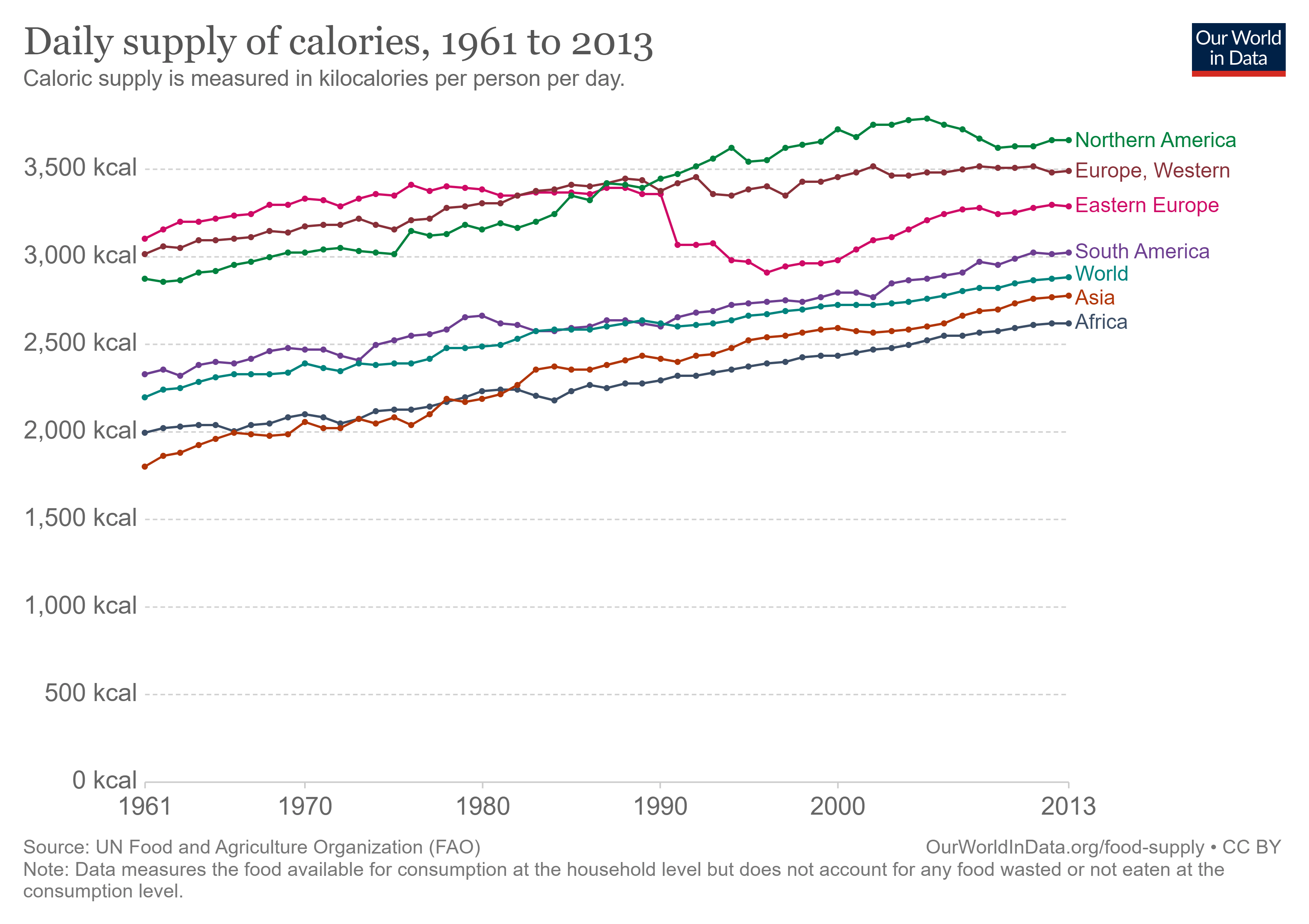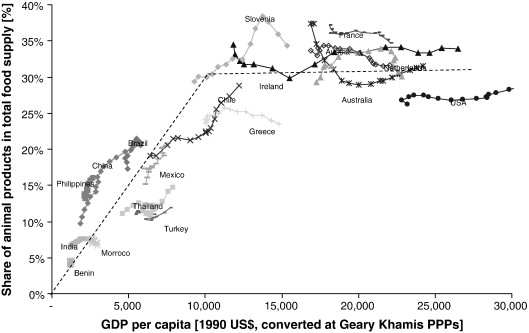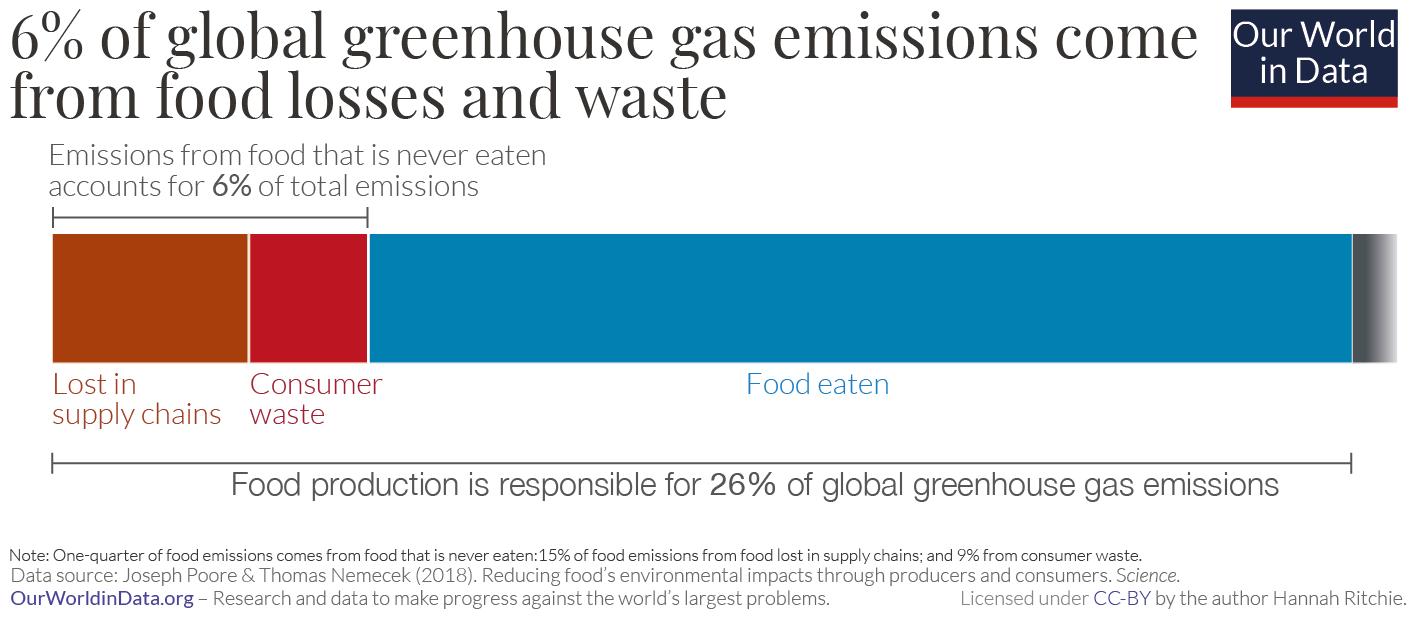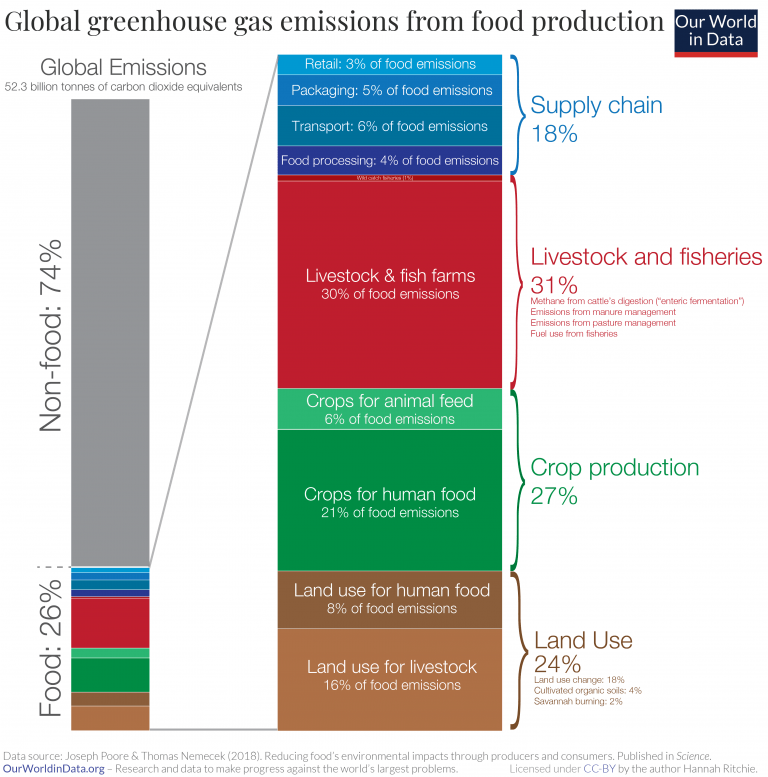Food & Climate
On this page we explain why food plays an important role in the fight against global warming.
The impact of food
Our worldwide food system has a huge impact on global warming. Estimates indicate that 26% of global CO2eq emissions come from the food chain. As can be seen in the picture, the largest share of food emissions come from livestock and fishing. Also, agriculture contributes a large share of the impact. It is however important to mention that the total agricultural production is many times greater than the meat production, which means that crops score significantly better per kilogram. The processing and transporting of food only accounts for under one fifth of the total emissions. There are also large differences in these figures between countries, among other things due to population size, culture and, above all, prosperity.
On this page we will further discuss the largest problems surrounding our food system and the climate.
If the whole world would have a Dutch lifestyle, this would lead to:
%
Increase in global CO2eq emissions. That is equal to 33 billion tons of extra CO2eq emissions per year [1]
As much agricultural land. That amounts to all habitable land on the earth. [2][3]
The climate problems caused by our food system
The damage that the food system causes to our climate already starts at the production phase. This impact is increased further by the processing and transport stages. Food production is one of the main causes of the following problems:

Global warming
Food production has an enormous contribution of about 26% contribution of global CO2eq emissions

Desiccation

Less biodiversity
Due to monoculture and shrinkage of nature areas for agriculture, the biodiversity is declining

Acidification
Oceans become more acidic, causing coral reefs to die and the marine food chains to collapse

Deforestation
(Tropical) forests are being cleared to make room for additional agriculture

Desertification
Agricultural land depletion leads to parched and barren soil

Soil erosion
Unforested soil has an increased risk of the fertile top layer being washed away

Eutrophication
Overconsumption
A frequently heard argument is that overpopulation is the cause of additional CO2eq emissions in the food industry and the growing demand for agricultural land. The world population has increased by about 1% per year in recent years [1], so that explains part of the increase. The biggest cause, however, is the increase in food consumption. As people get richer, their food impact increases because more and more luxurious food can be bought. As the graphs below show, the amount of kcal per person increases and the share of animal products in the diet also increases [5] [6]. The Dutch food center indicates that a maximum intake of 2500 (v) – 3000 (m) kcal per day is considered a healthy diet for active people [7]. However, the daily intake of many Western countries is well above this intake [5]. In addition, it can be seen that the share of animal nutrition increases to about one third when prosperity increases (GDP per person) to about $ 10,000 [6]. Most of the world’s population is still below this $ 10,000 mark and is expected to get richer in the coming years. The demand for animal products will therefore increase enormously in the coming years. And that with animal products having relatively the biggest footprint …


Share of animal products in food plotted against the GDP per person in different countries [6].
Food waste
It is estimated that about a quarter of the nutritional value produced is thrown away. Almost two thirds of these losses occur in the production chain and about one third at consumers’ homes. With the 26% CO2eq emissions worldwide from food production, food waste therefore accounts for a share of 6% of all CO2eq emissions worldwide. So think again when you throw away your leftovers!

Average emissions per meal type in the Netherlands
%
Breakfast
%
Lunch
%
Dinner
%
Snacks
The total CO2eq emissions of Dutch people are on average 4920 g CO2eq per day [4]
Sources:
[1]
[2] Alexander, P., Brown, C., Arneth, A., Finnigan, J., & Rounsevell, M. D. (2016). Human appropriation of land for food: the role of diet. Global Environmental Change, 41, 88-98. Available at: http://www.sciencedirect.com/science/article/pii/S0959378016302370
[3] WWF. 2016. Living Planet Report 2016. Risk and resilience in a new era. WWF International, Gland, Switzerland. Available at: http://awsassets.panda.org/downloads/lpr_living_planet_report_2016.pdf
[4] Vellinga, R.E.; van de Kamp, M.; Toxopeus, I.B.; van Rossum, C.T.M.; de Valk, E.; Biesbroek, S.; Hollander, A.; Temme, E.H.M. Greenhouse Gas Emissions and Blue Water Use of Dutch Diets and Its Association with Health. Sustainability 2019, 11, 6027. https://doi.org/10.3390/su11216027
[5] United Nations Food and Agricultural Organization (FAO). http://www.fao.org/faostat/en/#data/FBS
[6] Nonhebel. S, Kastner. T. Changing demand for food, livestock feed and biofuels in the past and in the near future. Volume 139, Issues 1–2, 2011, Pages 3-10, ISSN 1871-1413, https://doi.org/10.1016/j.livsci.2011.03.021
[7] Voedingscentrum. Hoeveel calorieën heb ik nodig? https://www.voedingscentrum.nl/nl/service/vraag-en-antwoord/gezonde-voeding-en-voedingsstoffen/hoeveel-calorie-n-heb-ik-nodig-.aspx

